Game Design Books For Beginners - Veterans
Find the best books to learn about game design and start making awesome games
- resources
- game-design
Disclaimer : This post may contain affiliate links, which means I will get a small commission for each item you purchase through the links provided, at no additional cost to you. The products mentioned here are what I've been using up until now and I recommend them because they are the products that I've found helpful.
In this post, I have listed some of the books about Game Design that I really recommend for both beginning game designers and also some of the more advanced ones. While game design and development is a broad subject to cover, I find that the initial stage of making games, that is designing, is the most crucial.
For that reason, I'll be focusing more on Game Design books that will change the way you design games forever.
Here goes the list.
Game Design Books
The Art of Game Design: A Book of Lenses, Third Edition
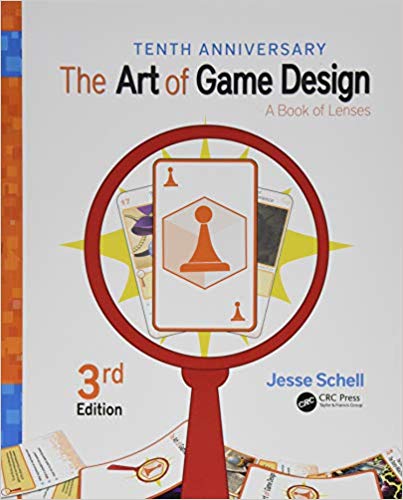
Written by Jesse Schell, this book is dedicated to teach you how to design interactive and fun game. It doesn't teach you how to programming or make game art or any technical production skills though, because it's not a book about game development. It's all about game mechanics, pitching, brainstorming, iterating and all of the activities revolving around game design.
The book has 2 parts of content. The first section gives you in depth explanation about all of the crucial elements in game design. It's definitely a great book for beginners because the explanations are easy to understand and there are even practical examples included to make every concept clear.
Even though more experienced game designers don't get too much new insights from the first part of the book, the second section, "100 Lenses", is pure treasure. In here, you will find what's called as "Lenses", which are collections of questions that can help you to iterate on your current designs.
As a designer, your job is mostly consists of asking questions. As soon as you start making a game, you need to ask yourself "what needs to be improved?" There are endless number of questions that one can ask. However, finding the right questions to ask is the key for coming up with the right solution.
All being said, this book is definitely a must have. It gives you insights on game design principles as well as questions to iterate your game until it's polished.
Get this book on amazon!
Level Up! The Guide to Great Video Game Design
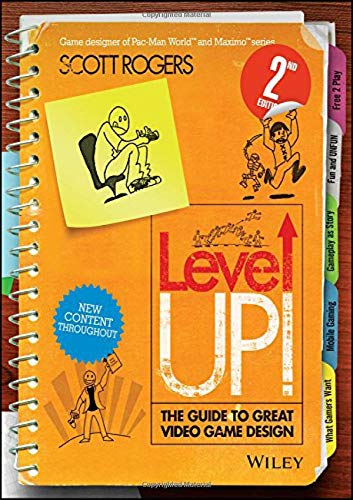
Chapters which are called "Levels" in the book, cover topics such as generating ideas, writing stories, character creation and design, cinematography, player control schemes, HUDs, level design, enemies, combat, puzzles and hazards, multiplayer games, music and cut scenes. It teaches these core elements in an accessible, very informative, and - thanks to the ample cartoon illustrations and footnotes – frequently humorous way.
This book is written by a leading video game expert Scott Rogers, who has designed Pac Man World, Maximo, and Spongebob Squarepants. Targeted at games professionals, game design students, and anyone else who loves video games, the breadth of information provides something for everyone. Even how to prevent players from vomiting due to motion sickness is covered!
Veteran game designer might find the few first chapters are aimed for newbies that teached the very basic introduction to video games, starting from the history to ideas brainstorming. Starting from level 4 (or chapter 4), the book starts explaining the importance of a Game Design Document (GDD).
As there is no official format for a GDD, the author instead clearly explains what type of content should be included and what sort of questions should be answered in it. The importance of creating a GDD, as an accurate guide for everyone involved in the game production, is underlined by the inclusion of templates provided at the end of the book in bonus levels.
For being entertaining, informative and bursting with design ideas, I highly recommend anyone who wants to "Level Up!" their game design journey.
Get this book on amazon!
Games, Design and Play: A detailed approach to iterative game design
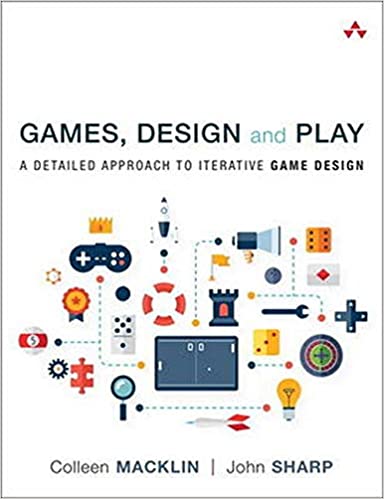
Unlike many other creative fields, game design is at its heart an iterative process guided by prototyping, playtesting and refinement. This process is easy enough to explain, but much more challenging to put into practice. Games, Design & Play makes the videogame design process—one seldom understood by anyone outside the game industry—accessible and actionable.
Drawing from less-known but important games of all types, Macklin and Sharp introduce a play-focused, iteration-based approach to videogame design. The authors conceive of game design as the design of “play experiences” where designers produce the apparatus with which players interact, but whose use is determined by the players. A play-focused approach to game design has to emphasize play. Using specific game examples, Macklin and Sharp show how a game’s structure enables different forms of play, and how to create play experiences for players.
This book is divided into 3 sections : Concepts, Process, and Practice. In Concepts section, you will go through definitions and principles of a play-based approach to game design. By the end of this section, you will have the terminology and conceptual framework for understanding games and play from a designer’s point of view.
Section two, Process, looks at some of the core processes and techniques through which the iterative design process unfolds. It introduces important methods and documents that will make the game design process smoother and more enjoyable.
The last section covers the iterative game design process of conceptualizing, prototyping, playtesting and evaluating the design of games as designed play experiences.
This book is a great resource to change the way how you iterate your games. Have this book in your reach now and start designing awesome games!
Get this book on amazon!
Theory of Fun for Game Design
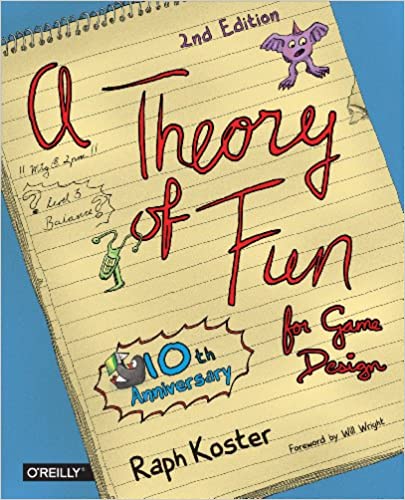
Written by a game designer who has developed Ultima Online series and the Start Wars Galaxies series, Raph Koster writes a fascinating study of what it is about games that people find so irresistible, going all the way back to such simple diversions as tic-tac-toe. As the title implies, the end result of this journey is to design better games.
Across twelve chapters, an introduction, and an epilogue, Koster provides stories and details about what makes games fun. He leverages all his experience as a game designer and fun maker. Koster looks at the topic from a number of different lenses.
Koster introduces the subject of patterns. He explains we try to find patterns in everything as a means to simply problems that we are trying to solve. Once we discover the patterns, we then use them in processes. The hunt for patterns and the practice of processes are what makes games fun. Once we have mastered the task and pattern, we become bored. We “grok” something when we have mastered the pattern to the point that it is intuitive. A game like tic-tac-toe is easy to grok because the pattern is easy to identify. However, a game like chess is harder to master because there are infinite patterns.
This book is written in a very conversational manner, yet it is packed with details that make you want to find out more. Reading the book was like peeling back the layers of an onion; there was always something new to explore.
I personally think that this is another book worth putting on your bookshelf if you are interested in gaming and gamification.
Get this book on amazon!
Fundamentals of Game Design
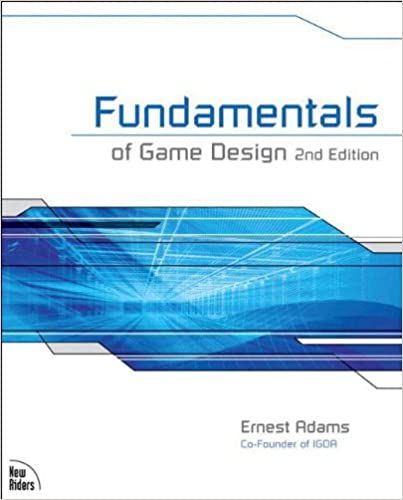
Another book that teaches you from the ground up, Ernest Adams wrote this book as both learning and practicing materials. This book (currently in its 3rd edition) is nice to have for game designers to hone their design skills.
This book takes you through concept development, designing games, the mechanics of it, interfaces, balance, and how to tell an engaging story. It also discusses designing for phones and the screens on phones and pads, and anything that is touch screen. It also introduces motion-capture game-play. It mentions how he designs games, from the first moment of determining the basic concept, to fleshing it out. At the end of the chapters it has exercises, design worksheets, and case studies that sum up what we have learned.
Overall, I really recommend this book if you like to have more practical studies about game design.
Get this book on amazon!
Wrapping Up
Some books that I've mentioned on the list are some of the best Game Design books that will improve your skills as a game designer. If you feel confused on what books you need to buy first, I highly recommend The Art of Game Design: A Book of Lenses, Third Edition and Level Up! The Guide to Great Video Game Design. Just with those 2 books, I think you're good to go on your game design journey.